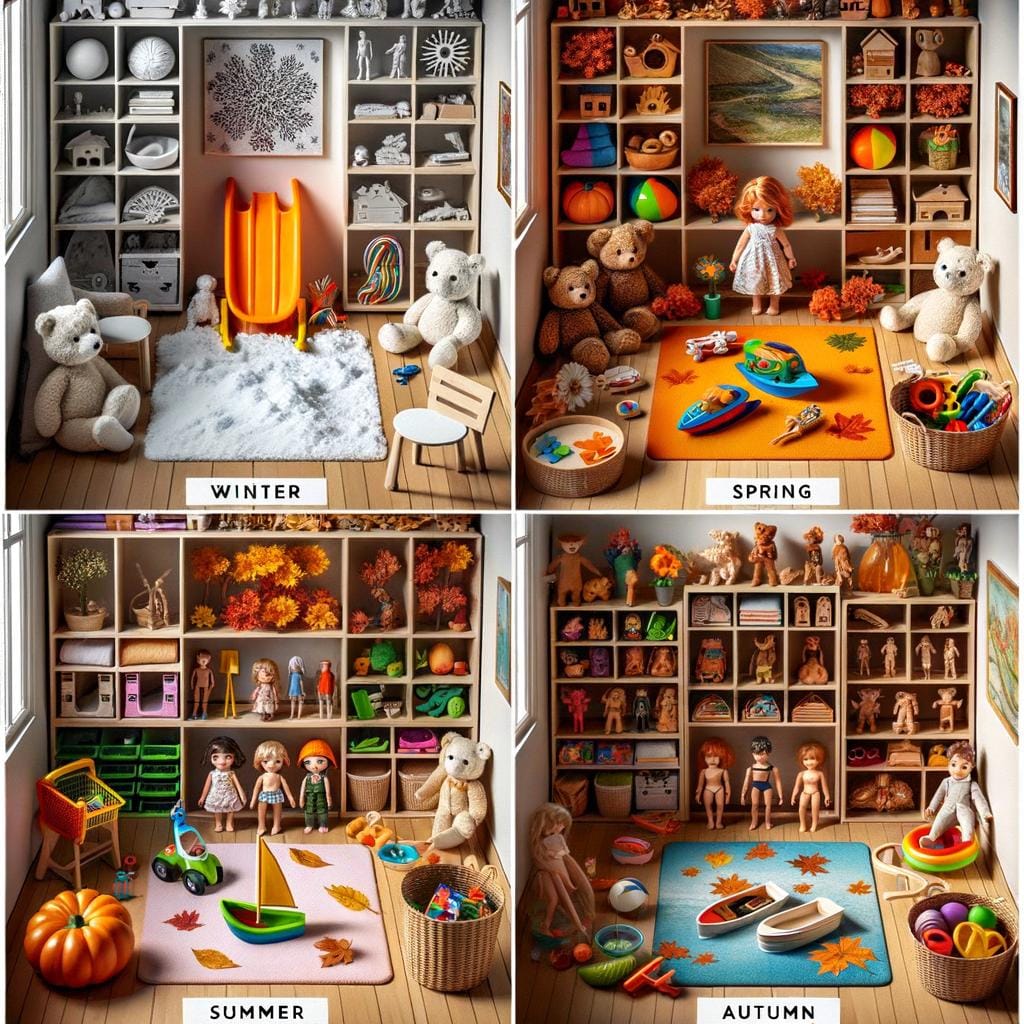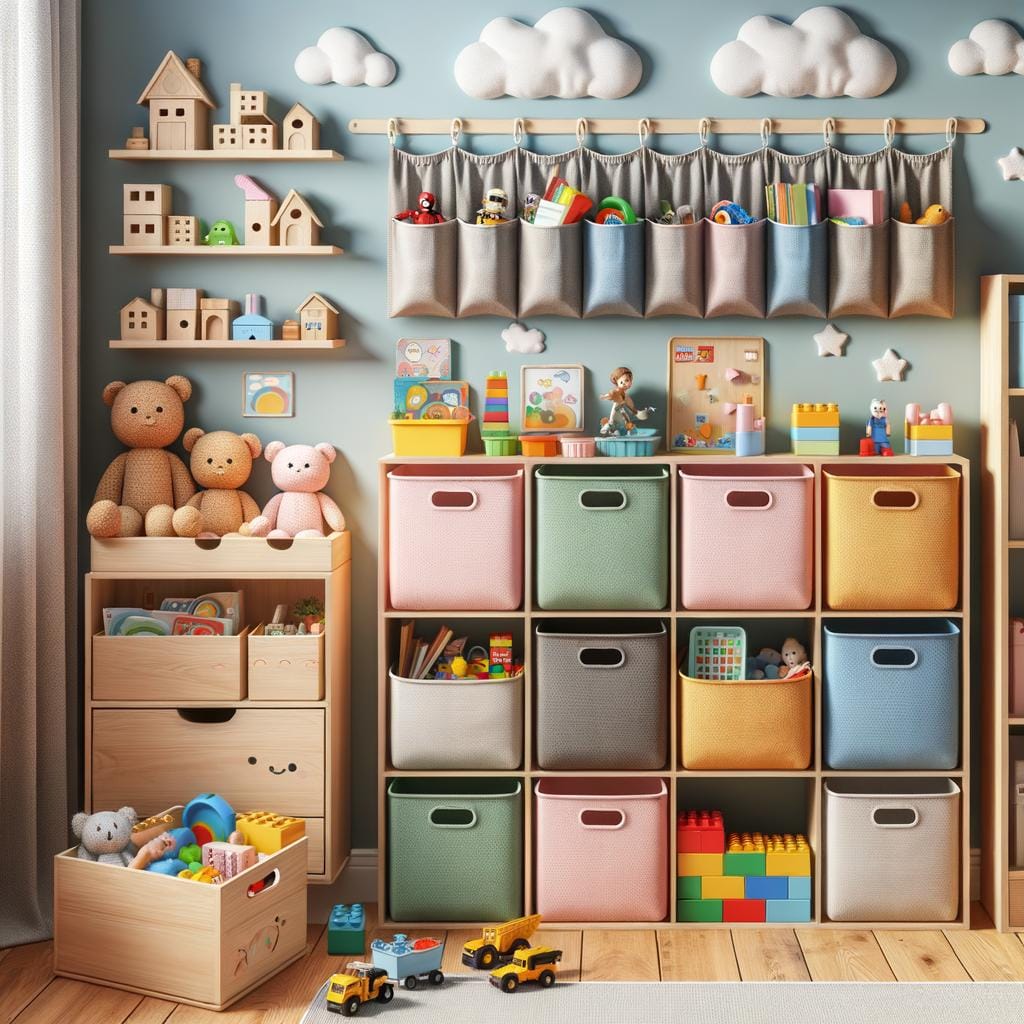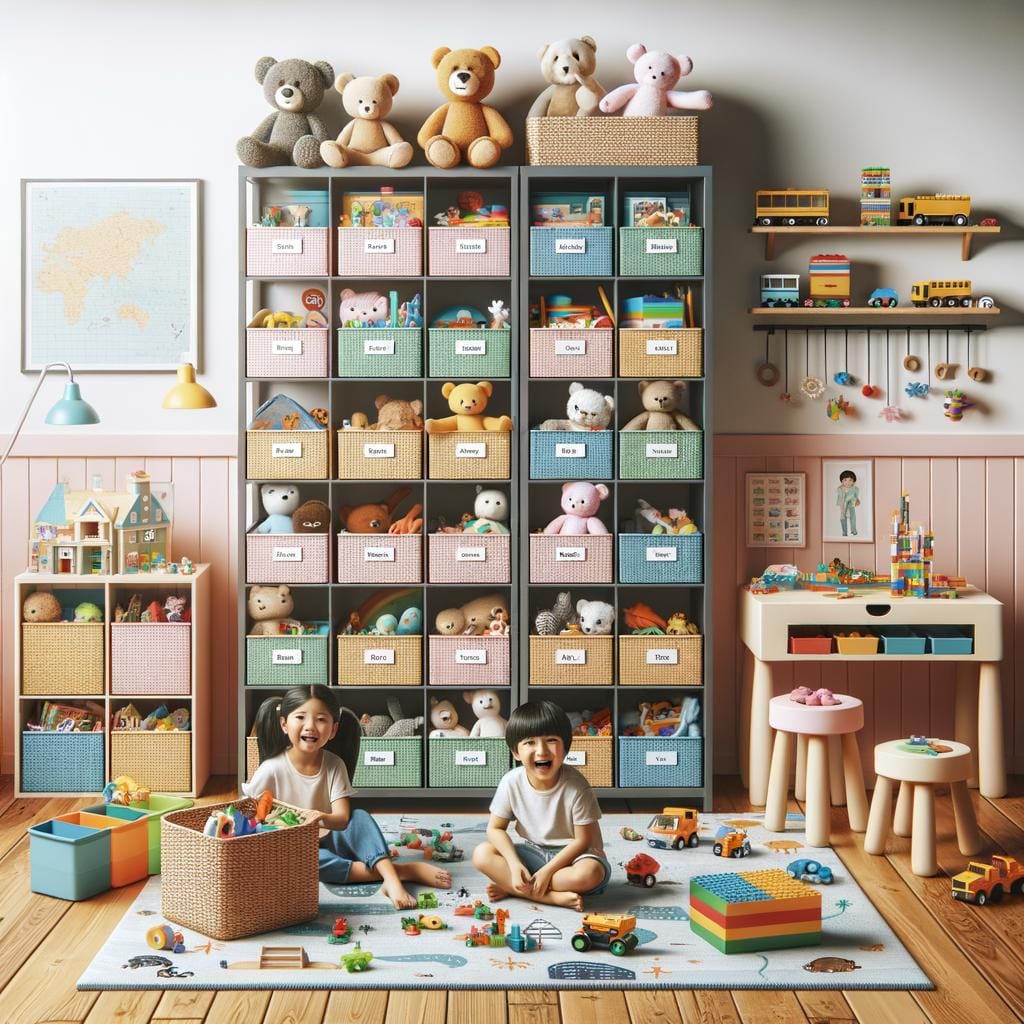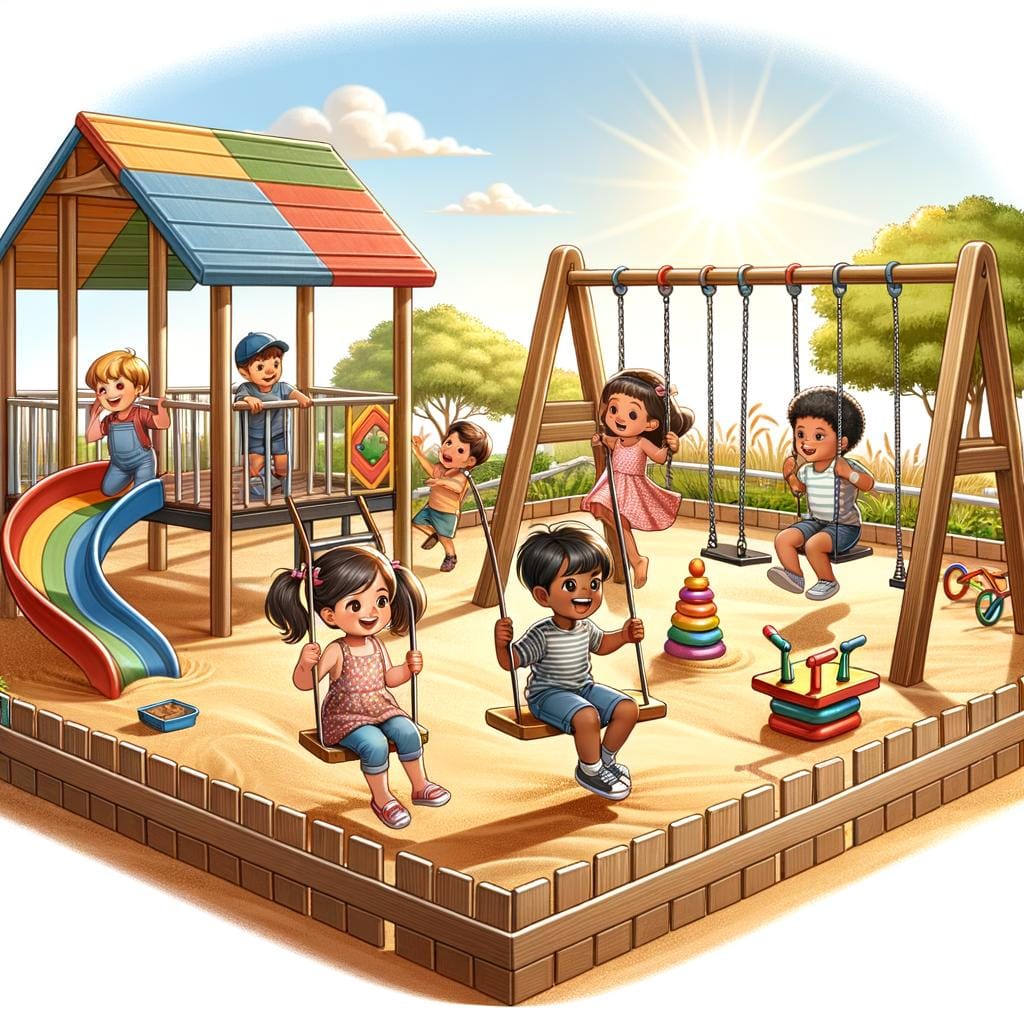Seasonal Toy Rotation is a simple yet effective strategy that involves periodically swapping out toys to keep children engaged, stimulated, and learning throughout the year. This practice not only prevents toy boredom but also helps in promoting children’s development by introducing new challenges and experiences.
By implementing Seasonal Toy Rotation, parents can provide their children with a variety of toys that cater to different skills and interests, encouraging creativity, problem-solving, and social interactions. It also allows for a more organized approach to playtime, as well as the opportunity for kids to appreciate and value their toys more.
In this article, we will explore the benefits of Seasonal Toy Rotation for children’s development, how to start implementing it in your home, tips for organizing and storing toys efficiently, best practices for rotating toys based on seasons and holidays, top toy recommendations for different times of the year, as well as real-life examples of families who have successfully embraced this approach.
Join us on this journey to discover how Seasonal Toy Rotation can save money, reduce clutter, and enhance your child’s play and learning experience.
Benefits of Seasonal Toy Rotation for Children’s Development
Seasonal toy rotation offers numerous benefits for children’s development, making it a valuable practice for parents to consider. By regularly switching out toys based on the season or upcoming holidays, children are exposed to a variety of play experiences that stimulate different skills and interests. This not only keeps playtime exciting and engaging but also promotes cognitive, social, emotional, and physical development in children.
One key benefit of seasonal toy rotation is that it helps prevent boredom and encourages creativity. When children have access to new toys or ones they haven’t seen in a while, they are more likely to engage in imaginative play and exploration.
This type of play is essential for developing problem-solving skills, language abilities, and critical thinking. Additionally, rotating toys can enhance a child’s attention span and focus as they rediscover old favorites or experiment with new ones.
Research has shown that children benefit from exposure to diverse stimuli and experiences during playtime. Seasonal toy rotation provides this variety by introducing toys related to specific seasons or holidays.
For example, bringing out beach toys in the summer can encourage outdoor play and sensory exploration, while incorporating educational toys during the school year can support learning in a fun way. By aligning toy selection with the time of year, parents can help their children make meaningful connections between play and their environment.
| Key Benefit | Impact |
|---|---|
| Prevents boredom | Encourages creativity through imaginative play |
| Enhances attention span | Supports cognitive development through varied stimuli |
How to Start Implementing Seasonal Toy Rotation in Your Home
Seasonal toy rotation is a concept that involves periodically switching out toys based on the season or holiday, to keep children engaged and interested in their playtime. It not only helps in maintaining a clutter-free environment but also has numerous benefits for children’s development. If you’re looking to start implementing seasonal toy rotation in your home, there are a few key steps to consider.
Assess Your Current Toy Collection
The first step in starting seasonal toy rotation is to take stock of the toys you currently have. Separate them into categories such as puzzles, books, building blocks, pretend play items, and outdoor toys. This will help you get a better idea of what types of toys you have and how they can be grouped for rotation purposes.
Create a Rotation Schedule
Once you have assessed your toy collection, create a rotational schedule based on seasons and holidays. For example, you can swap out outdoor toys for indoor ones during the colder months or introduce Easter-themed toys around the holiday season. Having a schedule in place will make it easier for you to plan ahead and ensure a smooth transition when rotating toys.
Involve Your Children in the Process
Get your children involved in the seasonal toy rotation process by letting them help choose which toys to rotate out and which ones to bring back. This not only empowers them to make decisions but also gets them excited about the new toys they’ll be playing with. Additionally, involving children in the organization and storing of toys can also teach them valuable skills about sorting and categorizing objects.
Tips for Organizing and Storing Toys for Rotation
Organizing and storing toys for seasonal rotation is essential for a smooth transition between different sets of toys throughout the year. This process not only helps in keeping the play area clutter-free but also ensures that children have access to age-appropriate and engaging toys at all times. Here are some tips to effectively organize and store toys for rotation:
Clear Containers and Labels
Invest in clear containers to store toys so that children can easily see what’s inside without having to open each one. Labeling these containers based on the season or theme can also help in quickly identifying which toys belong to which rotation, making the switching process more efficient.
Rotation Schedule
Create a toy rotation schedule that aligns with the changing seasons or upcoming holidays. This schedule can be monthly, quarterly, or based on specific events like birthdays or vacations. Having a set plan will make it easier to rotate toys regularly without feeling overwhelmed by the process.
Utilize Storage Solutions
Consider utilizing storage solutions like shelves, bins, baskets, or toy chests to keep the play area organized during each rotation period. These storage options not only help in keeping toys tidy but also make it easier for children to access and put away their toys independently.
By following these tips and establishing a system for organizing and storing toys for seasonal rotation, parents can create an exciting and engaging play environment for their children while promoting learning and development through varied play experiences throughout the year.
Best Practices for Rotating Toys Based on Seasons and Holidays
Seasonal toy rotation is a great way to keep children engaged and excited about their toys throughout the year. By swapping out toys based on seasons and holidays, you can create a sense of novelty and anticipation for your child. Here are some best practices to consider when rotating toys:
- Plan ahead: Create a schedule for when you will rotate toys based on upcoming seasons or holidays. This will help you stay organized and ensure that your child has appropriate toys to play with.
- Involve your child: Let your child be part of the process by asking them which toys they would like to see again when the next season rolls around. This can also help them understand the concept of seasonal toy rotation.
- Rotate a variety of toys: When rotating toys, make sure to include a mix of different types of toys such as educational, imaginative, and outdoor playthings. This variety can keep your child’s interest piqued.
By following these best practices, you can make the most out of seasonal toy rotation and enhance your child’s play experience throughout the year. Don’t forget to assess which toys are still age-appropriate each time you rotate them, ensuring that your child continues to benefit from their playtime.
Top Toy Recommendations for Different Seasons
Seasonal toy rotation not only helps in keeping children’s playtime engaging and exciting but also offers the opportunity to introduce toys that are appropriate for specific seasons. When recommending toys for different seasons, it is essential to consider both indoor and outdoor activities to cater to the changing weather conditions.
During the winter season, classic board games, puzzles, and indoor craft kits are excellent choices to keep kids entertained while staying warm indoors. Additionally, sensory toys like kinetic sand or playdough can provide a tactile experience that enhances fine motor skills development.
As spring arrives and children spend more time outdoors, toys that encourage physical activity and exploration are ideal. Items such as jump ropes, sidewalk chalk, bubbles, gardening tools, or even a sandbox can promote active play and stimulate curiosity about nature. These outdoor toys not only support physical development but also foster a connection with the environment.
When summer comes around, water play becomes a popular choice to beat the heat. Inflatable pools, water tables, squirt guns, and sandcastle building kits can provide hours of fun in the sun. These toys promote sensory experiences, imaginative play, and social interaction among children. Keeping seasonal toy rotation in mind allows parents to align their toy selection with the interests and developmental needs of their children throughout the year.
| Toy Recommendations for Different Seasons | Benefits |
|---|---|
| Winter: Board games, puzzles, indoor craft kits | Enhances fine motor skills development |
| Spring: Jump ropes, sidewalk chalk, bubbles | Promotes physical activity and curiosity about nature |
| Summer: Water tables, squirt guns, sandcastle building kits | Encourages sensory experiences and imaginative play |
How Seasonal Toy Rotation Can Save Money and Reduce Clutter
Seasonal toy rotation is not only beneficial for children’s development but can also help save money and reduce clutter in your home. By rotating toys based on seasons and holidays, you can keep children engaged and interested in their playthings without constantly buying new ones. This approach allows you to make the most out of the toys you already have, maximizing their value and extending their lifespan.
Here are some ways seasonal toy rotation can help save money and reduce clutter:
- Cost-effective: Instead of purchasing new toys regularly, rotating the existing ones gives your children a sense of novelty without breaking the bank.
- Space-saving: Storing toys that are not currently in use helps declutter living spaces, making it easier to organize and clean up after playtime.
- Environmental impact: By reusing and repurposing toys through rotation, you contribute to reducing waste and promoting sustainability.
Additionally, seasonal toy rotation allows you to evaluate which toys are truly engaging for your children and which ones may no longer be of interest. This process of curation can help you prioritize quality over quantity when it comes to toy selection, leading to a more intentional and enjoyable play experience for your little ones.
- Consider designating specific storage containers or areas for each season or holiday to keep the rotation organized.
- Label each container with its corresponding season or theme to easily identify which toys belong where.
- Regularly assess the condition of the toys during rotation to determine if any need repairs or replacements before being reintroduced.
By implementing these strategies for organizing and storing toys for rotation, you can streamline the process and make it more efficient, ultimately saving time and energy while maintaining a clutter-free home environment.
Real-Life Examples of Families Successfully Implementing Seasonal Toy Rotation
Seasonal toy rotation is a simple yet effective way to keep your children engaged and interested in their toys throughout the year. Many families have successfully implemented this strategy, leading to various benefits for both parents and children. By regularly swapping out toys based on seasons and holidays, families can create a sense of novelty and excitement around playtime, while also promoting creativity and imagination.
One family that has embraced seasonal toy rotation is the Johnsons. With three young children at home, they found that their kids quickly grew bored with their toys and would often resort to watching TV or playing video games. After learning about the concept of seasonal toy rotation, they decided to give it a try.
They now have designated bins for each season, filled with age-appropriate toys that are rotated every few months. The children eagerly anticipate “toy switch day” and have shown renewed interest and enthusiasm in playing with their toys.
Another example is the Park family, who used to struggle with toy clutter and disorganization in their home. Frustrated by the constant mess, they turned to seasonal toy rotation as a solution.
By storing away off-season toys in labeled containers and only keeping a select few out at a time, they were able to significantly reduce clutter and make cleanup easier for both kids and parents. The Park children have also learned valuable lessons about sharing and taking care of their belongings through this process.
Conclusion
In conclusion, implementing a seasonal toy rotation system can have a significant impact on children’s play and learning experiences. By regularly changing the selection of toys available to them, children are encouraged to explore new interests, engage in different types of play, and develop a variety of skills throughout the year. This approach not only keeps their playtime stimulating and exciting but also supports their cognitive, social, and emotional development.
Furthermore, by rotating toys based on seasons and holidays, parents can create opportunities for themed play activities that align with special occasions or changes in the weather. This not only adds a fun element to playtime but also helps children connect their toys with real-life events and experiences, fostering creativity and imagination.
Additionally, through the process of organizing and storing toys for rotation, children can learn valuable organizational skills and develop a sense of responsibility for taking care of their belongings.
Overall, seasonal toy rotation promotes a healthy balance between novelty and familiarity in children’s play environment. It offers a cost-effective way to provide children with a diverse range of toys while also preventing clutter and maximizing space in the home.
By following best practices for rotating toys and tailor-fitting recommendations to different seasons, families can create an enriching play environment that supports children’s growth, learning, and overall well-being. Embracing seasonal toy rotation can truly transform the way children engage with their toys and encourage a holistic approach to play-based learning.
Frequently Asked Questions
At What Age Should You Start Toy Rotation?
Toy rotation can start as early as infancy when a child begins to show interest in toys. As they grow older, around 6 months to a year old, rotating toys every 1-2 weeks can help keep their playtime engaging and fresh.
How Many Toys Should Be Out for Toy Rotation?
The number of toys to have out for rotation depends on the child’s age and preference. Generally, having around 5-10 toys available at a time is a good starting point. This allows children to fully explore and engage with each toy without feeling overwhelmed.
What Is the 20 Toy Rule?
The 20 Toy Rule suggests that children do not need more than 20 toys available for play at any given time. This rule encourages parents to carefully select a variety of toys that cater to different developmental needs and interests, while preventing clutter and overwhelming the child with choices.

Hello, I’m April Denton, your go-to expert for all things home decluttering and organization. With over a decade of experience helping individuals transform their living spaces into serene, clutter-free sanctuaries, I am passionate about the life-changing benefits of decluttering. My journey into the world of organization began out of necessity, juggling a busy career and a bustling household. I quickly realized that a well-organized home was the key to a more balanced, stress-free life.





